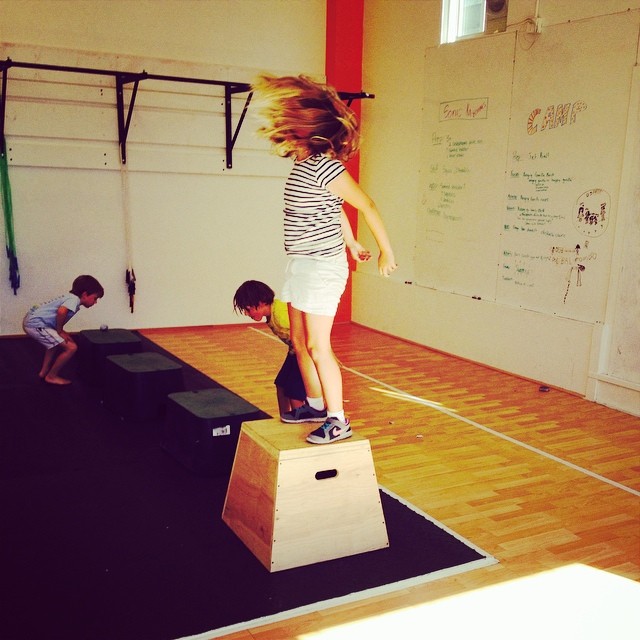The idea of preschoolers going to CrossFit is equally hilarious and unnerving. The mere mention of such a thing brings visions of my 3-year-old overturning monster truck tires or carrying buckets of water up a hill. It makes me chuckle, and it makes me cringe. It seems like a joke.
But as an article in the New York Times brought to light yesterday, CrossFit for kids is no joke at all. There are classes designed for 3- to 5-year-olds popping up in the Big Apple, built on “high-fives, not high reps.” As the fitness industry in America expands, and the obesity epidemic explodes, it seems CrossFit for kids has become a legitimate trend.
The New York Times article explains:
Physical fitness for children has become big business as gyms and workout centers continue to wind back the ages of their youngest customers. Last year, there were 460,000 children under 13 using personal trainers, according to the International Health, Racquet & Sportsclub Association, an industry trade group. That is more than triple the 140,000 who used them in 2009. Young boys and girls who used to be guided reluctantly into day care centers are now considered crucial to customer acquisition and retention.
As a quick Google search by this somewhat-astounded writer revealed, CrossFit for kids is not just a bougie New York thing, either. In fact, in Wallingford Sonic CrossFit bills itself as, “Seattle’s first CrossFit gym dedicated to kids and teens.” And as owner/coach Michelle Clark explains, Sonic CrossFit, which opened last spring, is actually one of only two CrossFit gyms in the country that caters specifically – and only – to kids. So far, Clark says roughly 100 kids have come through her gym’s doors.
Much like the NYT article describes, Sonic CrossFit offers classes for age groups ranging from 3 1/2- to 5-year-olds to high schoolers, and, according to Clark, places an emphasis on movement, fun, and building life-long healthy lifestyles. “How do we do this? We teach kids to squat, push, jump, pick up things, move like a spider and run like the wind,” the website explains. “Getting kids doing these things makes them strong, makes them agile, helps them think and builds a confidence in themselves and the things they do. We do this by teaching them new skills and building on those skills in complexity when they are ready. Kids are constantly challenged and make continuous gains using a program tailored to what they are ready for.”
Naturally, CrossFit for kids has its skeptics. As the NYT piece explores, some pediatricians warn of varying levels of instructor competency, and others worry about constructing negative body image issues at a young age. “You want to make sure it’s teaching lifelong healthy behaviors for the sake of being healthy and not focused on body image or weight,” Dr. Lee Beers, a pediatrician with Children’s National Health System, tells the New York Times. “Kids this age are sponges, and they pick up on everything around them.”
Locally, Clark says she’s also dealt with skepticism – mainly due to the CrossFit association. “I will be honest. It’s actually been a thing I’ve been battling,” she says of the hardcore workout stigma associated with CrossFit for adults. “The parents can be a little bit fearful. … It caught me by surprise.”
“I’ve thought about re-branding it, but the middle school kids love it, and they really associate as CrossFit-ers,” Clark continues. “From my standpoint now, it’s just about education. … It’s about fun first, and then safety. From a coaching standpoint, I don’t have a win-loss record. I don’t put any pressure as a coach to have kids perform. We’re just getting kids moving for fun. I haven’t seen a kid unhappy leaving the gym yet.”
Clark says she employs three coaches at Sonic CrossFit, and the focus is on “kids that have not found a place in organized sports.” And more than anything, she seemed happy to be on the phone with a writer interested in learning about what she’s trying to do. “Crossfit has been a really easy target to write bad stuff about,” she tells me. “I think what we’re doing is very positive.”








